How to Perfectly Balance Your Inbound and Outbound Marketing

How to Perfectly Balance Your Inbound and Outbound Marketing
Nearly 85% of B2B organizations think both inbound and outbound marketing tactics are key to driving business. Here are 4 valuable tips for aligning your marketing budget for increased ROI and revenue.
Effective marketing is similar to having a healthy conversation.
Healthy conversations are not one-sided. Instead, you first present an idea to solicit a response. You listen as the other speaks. Once you’re sure you are understood, you make a precise statement to communicate your point clearly.
Similar to conversations, the question that underlies effective marketing is: How much should you pull and how much should you push?
Nearly 85% of surveyed B2B organizations agree that both inbound and outbound marketing tactics are responsible for driving business. Over 50% of survey participants plan to increase their inbound tactics in the coming year.
Here’s a quick refresher for these terms.
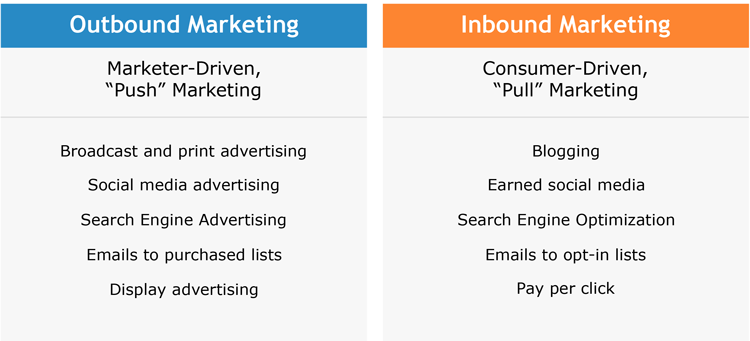
Essentially, inbound marketing draws customers to you.
Inbound marketing is favored because it’s permission-based and generates quality leads at scale. This approach assumes that leads will find you and act at their own pace. Since pulling leads down the marketing funnel takes time, inbound by itself can result in a sluggish sales pipeline.
Traditional styles of marketing are more likely outbound and involve pushing your message out to customers.
Outbound marketing is more interruptive and less precise, but it can drive results more quickly. However, too pushy a marketing mix will annoy your audience and rapidly deplete the marketing budget. A combination of both makes the most sense.
Balancing your inbound and outbound marketing allows you to sustain a cost-effective and rewarding customer relationship that efficiently drives revenue.
Here are 4 tips for balancing your marketing budget between inbound and outbound:
- Assess your sales pipeline
- Support outbound event marketing with inbound tactics
- Invest in full-funnel content
- Balance paid, earned, and owned media
Let’s discuss how to optimize your marketing mix for greater results and ROI.
1. Assess Your Sales Pipeline
To balance your inbound and outbound marketing, you’ll need to determine the status of the prospects in your sales pipeline.
What is the lead volume and velocity of your sales pipeline? What are your revenue goals?
According to the sales automation solution Salesforce, it takes 6 to 8 touches to generate a valid sales lead.
- Evaluate your pipeline and project the time required to close existing leads.
- Acquire and nurture new leads.
- Select which initiatives will help you reach your objective.
- Use lead scoring to assess the quantity and quality of leads in your pipeline.
- Convene sales and marketing to assign points to certain demographic, firmographic, and behavioral markers that suggest buying activity.
- Create a ranking system that correlates to the sales-readiness of leads and their position in the marketing funnel.
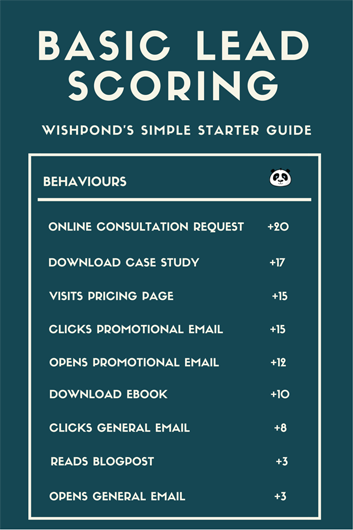
This ranking system allows you to gauge the volume of leads at certain funnel stages and prioritize the best leads for sales targeting.
Examine the scores and distribution of leads to clarify where to invest your resources for inbound and outbound, respective to each buyer persona and funnel stage.
2. Support Outbound Event Marketing With Inbound Tactics
While outbound marketing may burn a hole in your budget, it’s critical for branding and raising awareness about your business.
Making connections in person is a highly effective way to generate leads, so it’s no surprise that 77% of B2B marketers use events in their outbound marketing strategies.
While inbound marketing is the precious newcomer, if you want sales qualified leads right now – you have to go after them.
The Outbound Benefits of Event Marketing
Event marketing typically consumes 20-25% of a B2B organization’s marketing budget, and for good reason.
Events are a magnet for top-funnel prospects and provide an opportunity to secure meetings with marketing and sales qualified leads.
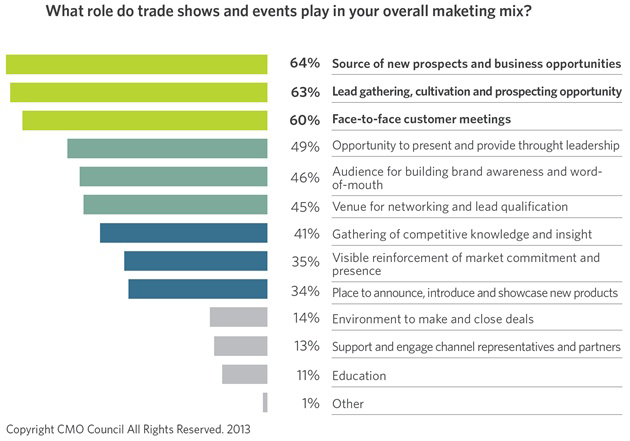
Being outgoing with events offers other intangible benefits:
- Increased exposure
- Earned media
- Industry networking opportunities
- Thought leadership via speaking engagements
For example, implementing a demand generation email campaign will yield results immediately, as will attending a tradeshow or hosting an event.
The Inbound Benefits of Event Marketing
While events are traditionally considered outbound marketing, you can drive the greatest return on events by using inbound tactics.
More than 50% of marketers promote their events on social in real-time, but you can also boost event engagement with these inbound tactics:
- Email nurturing increases awareness about your events and educates potential attendees about the benefits of attending.
- Retargeting website visitors lets you stay top of mind with interested prospects to drive event enrollment.
- Creating blog content around the event helps boost your visibility and reinforce your position in the market.
There are other methods of successfully using inbound marketing at live events.
For example, you can host a webinar that lets attendees ask live questions to blend the effectiveness of both inbound and outbound.
Partnering with an industry leader that holds a complimentary audience will further expand your reach with qualified mid-funnel leads.
3. Invest In Full-Funnel Content
The most effective digital marketing strategies promote their best inbound content through outbound techniques.
For example, you can advertise your content to attract prospects and nurture leads throughout the funnel.
Aim to develop content for each of your buyer personas, making sure that it spans the entire customer journey without coverage gaps. Since this content is used from lead capture to sales enablement, it’s known as full-funnel content.
A comprehensive library of assets allows you to run ads or nurture campaigns without the risk of a leaky funnel.
According to Forrester Research, companies that excel at nurturing leads will generate 50% more sales-ready leads at 33% less cost.
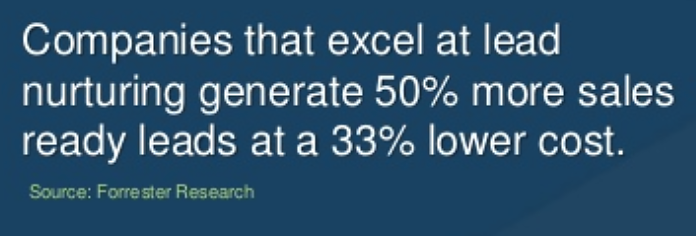
While your marketing mix uses a variety of content, investing in evergreen content will yield the best return across both inbound and outbound efforts. Since evergreen content is created to remain relevant, it holds its value and functions as an investment in your brand.
After all, your brand image is an investment, and your content is a pervasive representation of your brand. Thinking of great content as a long-term investment allows you to value it correctly when balancing your budget.
4. Balance Paid, Owned, and Earned Media
Well-balanced content will increase the impact and reduce the cost of your marketing. If the customer experience is seamless, marketing initiatives will drive maximal reach and impact.
Keeping your owned media (website, social media, blog) current and valuable will ensure visitors want to return to your website. Nearly 80% of shoppers who experience a dissatisfying visit will be less likely to purchase from that site again, reports the content delivery network Akamai.
The more rewarding your owned media experience, the more engagement you’ll receive and the greater your conversion rates will be.
When visitors interact with owned media it helps to strengthen your share of earned media, including:
- Social media shares
- Word of mouth
- Reviews
- Testimonials
For example, regularly posting in-depth blogs will facilitate shares and create a conversation on social. Or, you could stir up positive sentiments by soliciting feedback with customer surveys via email.
These authentic engagements are essential for convincing incoming prospects to trust you and become customers.
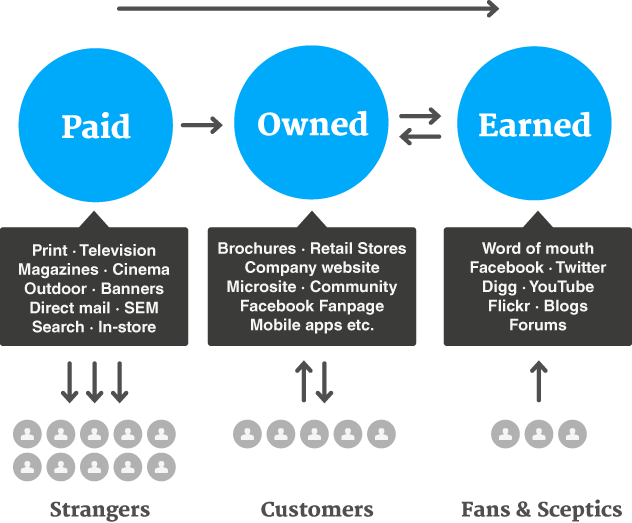
If your earned and owned media encourages traffic, paid media (ads, influencer promotions) will enjoy greater conversions.
Synergy between your media ensures that inbound campaigns stay most prominent, while outbound campaigns achieve greater influence.
Balance the Budget to Drive Results
To best engage with future customers, you must attract with inbound marketing and drive action with outbound marketing.
Whenever possible, pull eyes toward your push campaigns to enhance their impact and improve the return for costly outbound initiatives.
Aligning marketing tactics will maximize your marketing budget and help drive optimal ROI.
